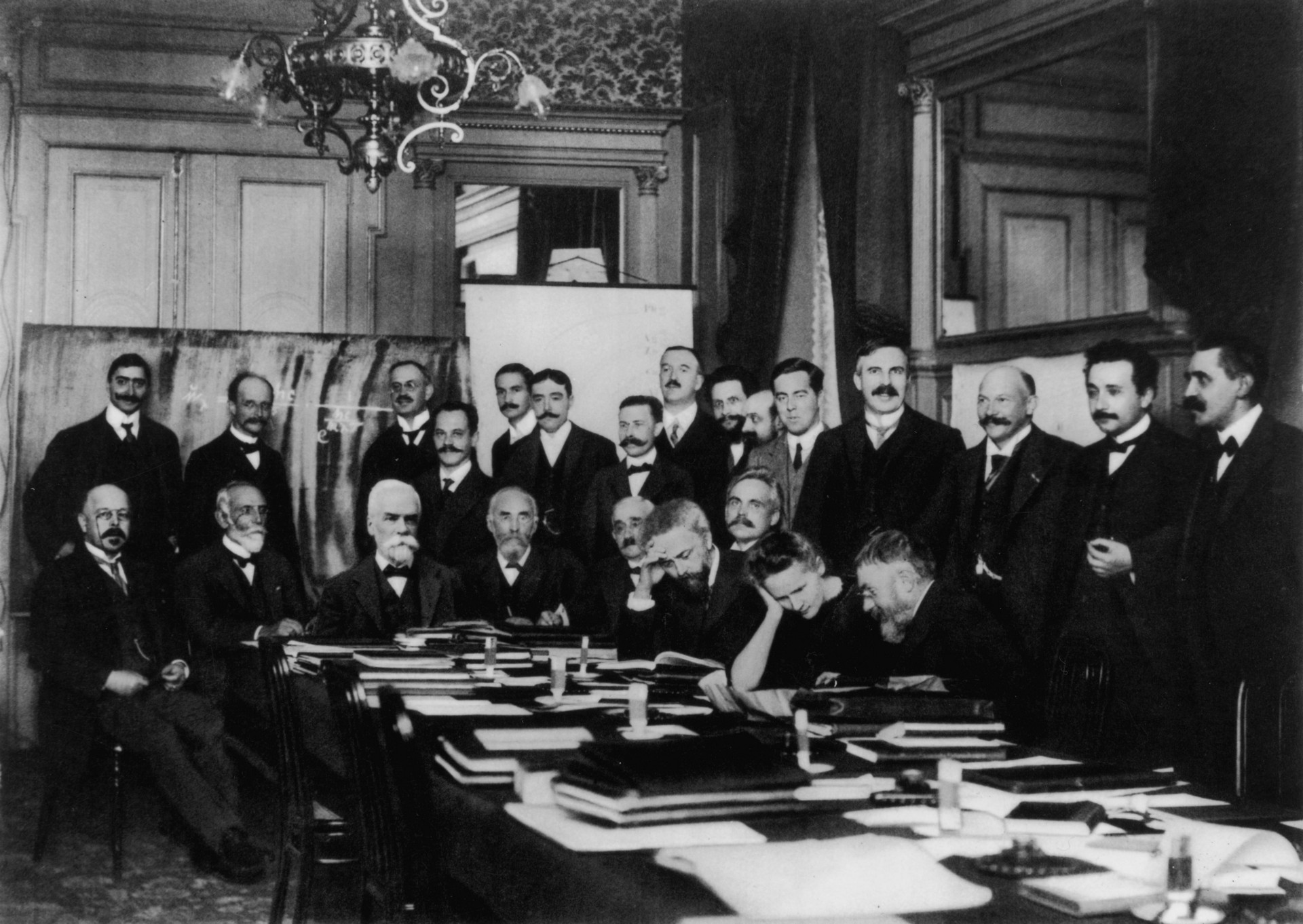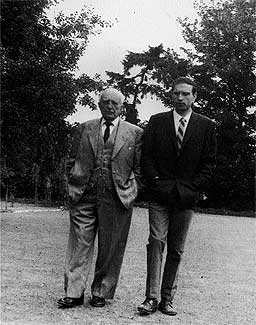|
Spanish Royal Physics Society
The Spanish Royal Physics Society (RSEF) is a non-profit institution for the branch of Physical Sciences resulting from the division in 1980 of the Spanish Royal Society of Physics and Chemistry ( Real Sociedad Española de Física y Química, RSEFQ), founded in 1903, into the Royal Societies of PhysicsRSEF)and Chemistry ( RSEQ) of today. The RSEF has been officially recognised as an Association of Public Interest. It aims to promote and develop the basic knowledge of physics and its applications, and to encourage scientific research and teaching of physics in all reaches of education. The RSEF operates on a national scale and maintains international relations with other Societies with similar aims, including Iberoamerican Societies. More details and the Statutes of the RSEF can be found on its ''website'', http://rsef.es/ The RSEF is structured into Specialised Groups and Divisions (for different areas of physics), such as the Condensed Matter Division and Local Sections (grouping ... [...More Info...] [...Related Items...] OR: [Wikipedia] [Google] [Baidu] |
Solvay Conference
The Solvay Conferences (french: Conseils Solvay) have been devoted to outstanding preeminent open problems in both physics and chemistry. They began with the historic invitation-only 1911 Solvay Conference on Physics, considered a turning point in the world of physics, and continue to the present day. Following the initial success of 1911, they have since been organised by the International Solvay Institutes for Physics and Chemistry, founded by the Belgian industrialist Ernest Solvay in 1912 and 1913, and located in Brussels. The institutes coordinate conferences, workshops, seminars, and colloquia. Recent Solvay Conferences usually go through a three year cycle: the Solvay Conference on Physics, followed by a gap year, followed by the Solvay Conference on Chemistry. Notable Solvay conferences First conference Hendrik Lorentz was chairman of the first Solvay Conference on Physics, held in Brussels from 30 October to 3 November 1911. The subject was ''Radiation and the Quan ... [...More Info...] [...Related Items...] OR: [Wikipedia] [Google] [Baidu] |
Anales De Física
''Anales de Física'' was a peer-reviewed scientific journal covering research in all areas of physics published by the Royal Spanish Society of Physics (Real Sociedad Española de Física). It continued '' Anales de la Real Sociedad Española de Física y Química/Serie A, Física'' and its first independent title was: * ''Anales de Física'', 1968 (vol 64) to 1980 (vol. 76; , CODEN: ANFIA6) From 1981 (vol. 77 (1981) to Vol. 87 (1992) the journal was split in two sections: * ''Anales de Física/Serie A, Fenómenos e Interacciones'' (, CODEN: AFAIDU), * ''Anales de Física/Serie B, Aplicaciones, Métodos e Instrumentos'' (, CODEN: AFBIDZ). Finally, the journal was renamed to * ''Anales de Física'', 1992 (vol. 88) to 1998 (vol. 94; , CODEN: AFISEX) Publication ceased after issue no. 2, 1998, when the journal was merged with several other European journals in the ''European Physical Journal The ''European Physical Journal'' (or ''EPJ'') is a joint publication of EDP Science ... [...More Info...] [...Related Items...] OR: [Wikipedia] [Google] [Baidu] |
Antonio Fernández Rañada
Antonio Fernández-Rañada Menéndez de Luarca (1939 – 19 May 2022) was a Spanish theoretical physicist. Biography Antonio Fernández-Ramada was born in Bilbao. Soon after his birth, his family moved to Oviedo, where he spent his childhood and youth until he began his university studies in Madrid. He graduated in physics with a licentiate from the Complutense University of Madrid. In 1965 he graduated with a PhD from the University of Paris with a thesis on causality and the S-matrix. In 1967 he defended his habilitation thesis ''Propiedades analítica en la difusión pión-nucleón'' (Analytic properties in pion-nucleon diffusion) at the Complutense University of Madrid. He was employed at the '' Centro de Investigaciones Energéticas, Medioambientales y Tecnológicas'' (CIEMAT), formerly named the ''Junta de Energia Nuclear'' (Nuclear Energy Board). He taught quantum mechanics at the University of Barcelona and theoretical physics at the Complutense University of Madrid. He ... [...More Info...] [...Related Items...] OR: [Wikipedia] [Google] [Baidu] |
Isabella II Of Spain
Isabella II ( es, Isabel II; 10 October 1830 – 9 April 1904), was Queen of Spain from 29 September 1833 until 30 September 1868. Shortly before her birth, the King Ferdinand VII of Spain issued a Pragmatic Sanction to ensure the succession of his firstborn daughter, due to his lack of a son. She came to the throne a month before her third birthday, but her succession was disputed by her uncle the Infante Carlos (founder of the Carlist movement), whose refusal to recognize a female sovereign led to the Carlist Wars. Under the regency of her mother, Spain transitioned from an absolute monarchy to a constitutional monarchy, adopting the Royal Statute of 1834 and Constitution of 1837. Her effective reign was a period marked by palace intrigues, back-stairs and antechamber influences, barracks conspiracies, and military '' pronunciamientos''. She was deposed in the Glorious Revolution of 1868, and formally abdicated in 1870. Her son, Alfonso XII, became king in 1874. Bi ... [...More Info...] [...Related Items...] OR: [Wikipedia] [Google] [Baidu] |
Complutense University Of Madrid
The Complutense University of Madrid ( es, Universidad Complutense de Madrid; UCM, links=no, ''Universidad de Madrid'', ''Universidad Central de Madrid''; la, Universitas Complutensis Matritensis, links=no) is a public research university located in Madrid. Founded in Alcalá in 1293 (before relocating to Madrid in 1836), it is one of the oldest operating universities in the world. It is located on a sprawling campus that occupies the entirety of the Ciudad Universitaria district of Madrid, with annexes in the district of Somosaguas in the neighboring city of Pozuelo de Alarcón. It is named after the ancient Roman settlement of Complutum, now an archeological site in Alcalá de Henares, just east of Madrid. It enrolls over 86,000 students, making it the third largest non-distance European university by enrollment. It is one of the most prestigious Spanish universities and consistently ranks among the top universities in Spain, together with the University of Barcelona, Pom ... [...More Info...] [...Related Items...] OR: [Wikipedia] [Google] [Baidu] |
Spanish Civil War
The Spanish Civil War ( es, Guerra Civil Española)) or The Revolution ( es, La Revolución, link=no) among Nationalists, the Fourth Carlist War ( es, Cuarta Guerra Carlista, link=no) among Carlists, and The Rebellion ( es, La Rebelión, link=no) or The Uprising ( es, La Sublevación, link=no) among Republicans. was a civil war in Spain fought from 1936 to 1939 between the Republicans and the Nationalists. Republicans were loyal to the left-leaning Popular Front government of the Second Spanish Republic, and consisted of various socialist, communist, separatist, anarchist, and republican parties, some of which had opposed the government in the pre-war period. The opposing Nationalists were an alliance of Falangists, monarchists, conservatives, and traditionalists led by a military junta among whom General Francisco Franco quickly achieved a preponderant role. Due to the international political climate at the time, the war had many facets and was variously viewed as cla ... [...More Info...] [...Related Items...] OR: [Wikipedia] [Google] [Baidu] |
Salvador De Madariaga
Salvador de Madariaga y Rojo (23 July 1886 – 14 December 1978) was a Spanish diplomat, writer, historian, and pacifist. He was nominated for the Nobel Prize in Literature, and the Nobel Peace Prize. He was awarded the Charlemagne Prize in 1973. Life De Madariaga graduated with a degree in engineering in Paris, France. He then went to work as an engineer for the Northern Spanish Railway Company but abandoned that work to return to London and become a journalist by writing in English for ''The Times''. Meanwhile, he began publishing his first essays. He became a press member of the Secretariat of the League of Nations in 1921 and chief of the Disarmament Section in 1922. In 1928, he was appointed Professor of Spanish at Oxford University for three years during which he wrote a book on nation psychology, ''Englishmen, Frenchmen, Spaniards''. In 1931, he was appointed Spanish ambassador to the United States and a permanent delegate to the League of Nations; he kept the latter pos ... [...More Info...] [...Related Items...] OR: [Wikipedia] [Google] [Baidu] |
Niceto Alcalá-Zamora
Niceto Alcalá-Zamora y Torres (6 July 1877 – 18 February 1949) was a Spanish lawyer and politician who served, briefly, as the first prime minister of the Second Spanish Republic, and then—from 1931 to 1936—as its president. Early life Alcalá-Zamora was born on 6 July 1877 in Priego de Cordoba, son of Manuel Alcalá-Zamora y Caracuel and Francisca Torres y del Castillo. His mother died when Niceto was three years old. A lawyer by profession, from a very young age, he was active in the Liberal Party. Chosen as a deputy, he quickly gained fame for his eloquent interventions in the Congress of Deputies, becoming Minister of Public Works in 1917 and of War in 1922, and it comprised part of the governments of concentration presided over by García Prieto. He was also Spain's representative in the League of Nations. Second Republic Disappointed by the acceptance on the part of King Alfonso XIII of the ''coup d'état'' by General Miguel Primo de Rivera on 13 September 1923, ... [...More Info...] [...Related Items...] OR: [Wikipedia] [Google] [Baidu] |


_Cardenal_Cisneros%2C_relieve.jpg)

